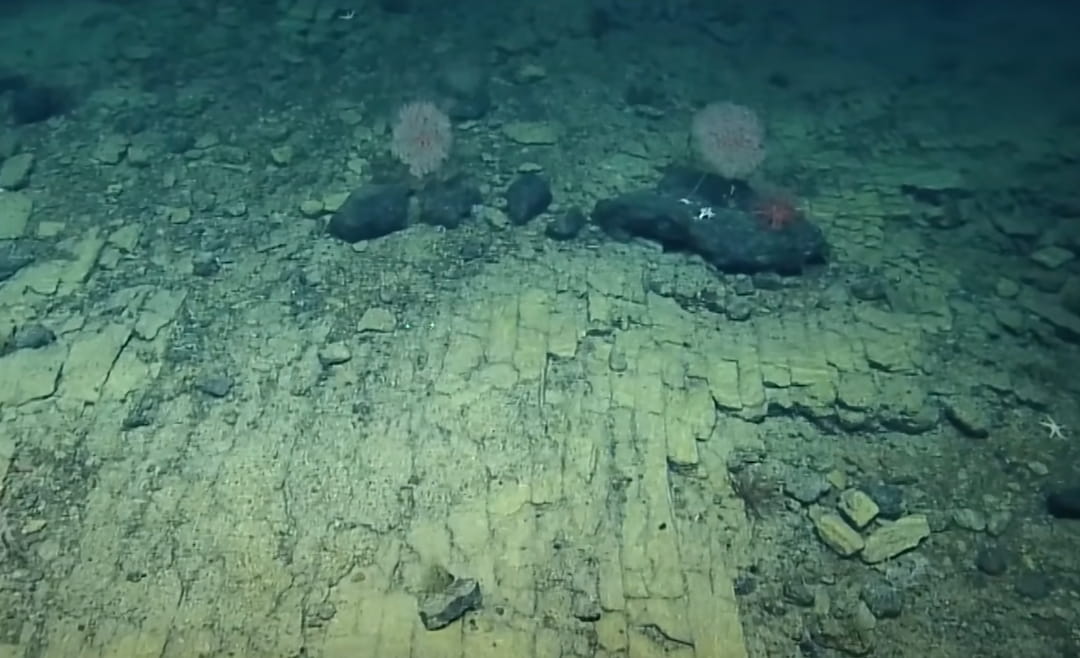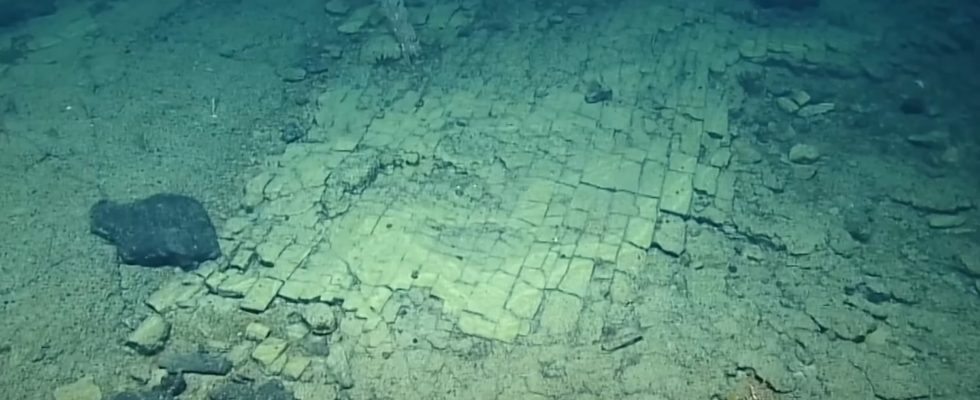At a depth of 3,000 meters, researchers discovered a “yellow brick road”. But who could have built it?
“A path to Atlantis”, exclaimed one of the researchers at the sight of a “yellow brick road”, lost at the bottom of the Pacific. On board the “Nautilus”, an exploration ship, archaeologists had the impression of being in the middle of the novel Twenty Thousand Leagues Under the Sea by Jules Vernes, by discovering by chance a “yellow road” at a depth of 3000 meters.
The crew was originally studying the Lili’uokalani Ridge, located in the Papahānaumokuākea Marine National Monument, located northwest of the Hawaiian Islands. With its 1,510. 000 km² wide, it is one of the largest marine conservation areas in the world. However, only 3% of its extent has already been studied, making it an invaluable playground for scientists around the world.

These images were filmed live and published on YouTube by researchers from the non-profit organization “Ocean Exploration Trust”. The discovery came after several minutes of marine exploration without a start. When a detail catches the eye: among the rocks and pebbles, a yellowish paved road emerges.
According to archaeologists, this “baked crust”, which resembles a man-made path, is actually the ancient bed of a dry lake, covered in volcanic rock. Due to successive changes in temperature, cracks would have spread to form a sort of cobblestone, giving the appearance of a dry “road”.
Although it is not a path to Atlantis (this legendary city supposedly engulfed by water), this discovery nonetheless remains intriguing. In particular, it highlights the great gap in our knowledge of the seabed. To date, only 24.9% of the ocean depths have been mapped, and 5% have been truly explored. For good reason, the research conditions are extremely harsh. With temperatures fluctuating between 0° and 6°C and high underwater pressures, researchers run many risks to carry out their research.
